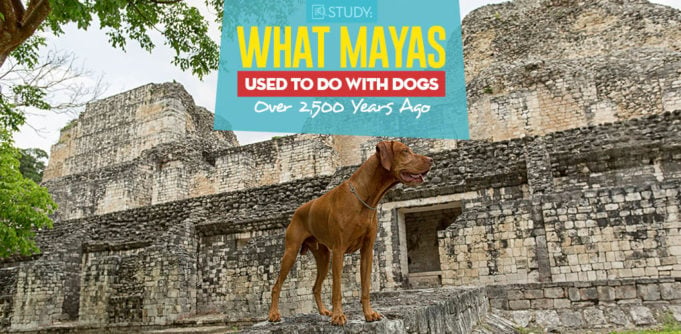New study found that Mayas raised and traded dogs for ceremonies, kept them as guardians and pets, and did not differentiate between breeds.
Growing up, I used to love the video game Tomb Raider. In the game's recent installment Lara Croft goes adventuring in the world of the ancient Maya, and something caught my eye – a lot of the main foes in the game were are around the picture of the dog. It even seemed to give off the impression that the Mayas kept dogs as guardians.
That led me to think – did ancient civilizations have pets, just like we do? Did they look after animals? And why did they do that – was it just for sacrificial purposes, or were there other reasons why the Maya would choose to keep animals?
Whenever you read history books, and when it comes to dogs in ancient civilizations, it seems that the Maya particularly had a lot of use for them, and now we finally have archaeological evidence to confirm that.

This new research published in the Proceedings of the National Academy of Sciences has found that animal trade has been happening from as far back as 2,500 years ago, in what's known as the Preclassic Period in history and archaeology. The Maya didn't just own dogs that they randomly found wandering the ancient wilderness – they bred and raised them themselves.
Some of their dogs were raised for purely ceremonial purposes. Others seemed to serve as guard dogs and pets, exactly the same way we keep our dogs today.
The scientists performed isotopic analysis on animal bones found at a site in Guatemala from the Preclassic Period of (700 – 350 B.C). Their research shows that dogs didn't just gain popularity with the rise of the city culture but were regular residents along with people during the time of ancient civilizations.

Another interesting discovery was that the Maya fed their dogs mostly with maize and table scraps. Unlike other animal remains – which seem to have been used for animal sacrifices – some of the dogs' remains show that the four-legged furry friends also took part in hunting rituals.
RELATED: 20 Most Ancient Dog Breeds
Even when used in sacrifice, dogs were considered an important part in Mayan rituals. They were often associated with new beginnings and a fresh start, which is why they were mostly executed during the New Years. Another interesting fact is that the Maya had nine whole words that can be interpreted to mean “dog”. So they didn't really differentiate between different breeds of dogs; for them a dog was simply a dog.
Archaeological research shows that three distinct dog breeds can be identified from the remains: the furred dog, the hairless dog and the – which is now considered extinct – short-legged dog. The researchers also found that Mayas used to move around with their dogs, which is one of the first pieces of evidence on how canines were brought to certain parts of the world.
“This is the first evidence from the Americas of dogs being moved around the landscape.”
So was Tomb Raider's decision to include them as foes in Underworld a historical blunder? Actually, very far from it! In Mayan literature, dogs were also considered to be the protectors of the Underworld and since the plot of the story relates closely to Lara finding out more about the Mayan mythology of death, they have gone above and beyond in doing their research.
Not only is the game historically accurate, but it also helped us learn more about dogs and the Maya. We often think that dog domestication didn't exist so far back in some of the lesser known cultures, but new research comes out to prove us wrong every single time.
READ NEXT: The Evolutionary Tree of Dogs Has Finally Been Mapped Out
Study Reference:
- Ashley E. Sharpe, Kitty F. Emery, Takeshi Inomata, Daniela Triadan, George D. Kamenov, John Krigbaum. Earliest isotopic evidence in the Maya region for animal management and long-distance trade at the site of Ceibal, Guatemala. Proceedings of the National Academy of Sciences, 2018; 201713880 DOI: 10.1073/pnas.1713880115













